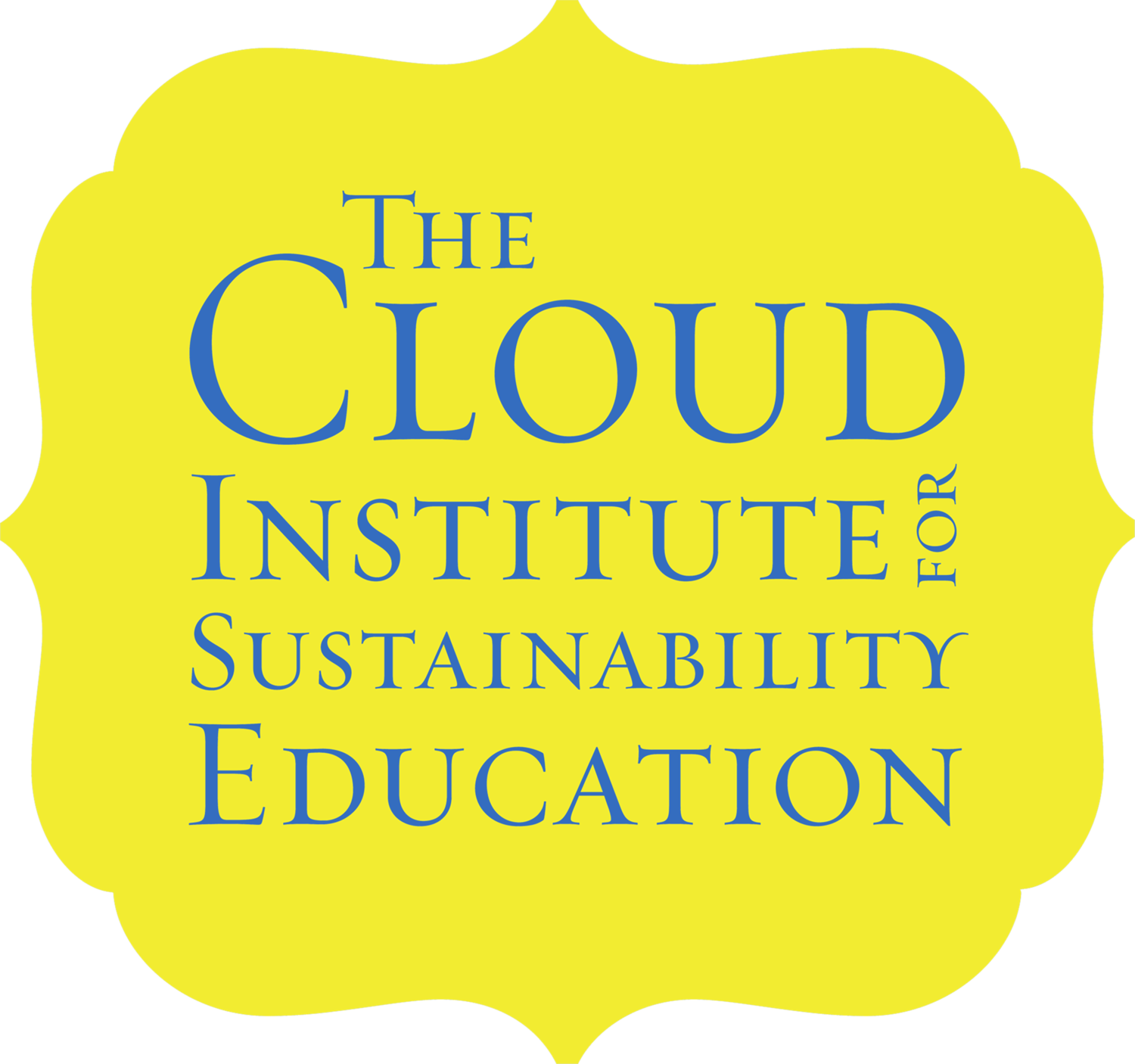The Cloud Institute’s Education for Sustainability (EfS) Standards and Performance Indicator’s Q & A
/Q. Who and what informed the development of these standards?
A. Since 1987, Jaimie Cloud has been collecting and organizing opinions about the core competencies associated with being sustain-able on planet Earth. Drawing from the literature and the work of selected scholars across a wide range of disciplines as well as her own experience educating for sustainability, The Cloud Institute’s EfS Standards and Performance Indicators have been developed, organized, tested, revised, and used to define the field and to design 21st century curriculum and systemic change, domestically and globally. Our EfS Standards and Performance Indicators are informed by comprehensive research, drawing on publications and perspectives from the leading voices in the field of Education for Sustainability and complementary areas of study such as Agenda 21 Chapter 36, the U.S. Task Force on Education for Sustainability, Robert Costanza, Herman Daly, Sabine O’Hara, Hazel Henderson, Fritjof Copra, Anne Perraca Bijur, Jack Byrne, Keith Wheeler, Jaimie Cloud, Karl Henrik Robert, Paul Mankiewicz, Julie Mankiewicz, Paul Ryan, Harland Cleveland, Edward DeBono, Buckminster Fuller, Garrett Harding, David Sobel, Paul Hawken, David Orr, Jean Perras, Peter Senge, Willard Kniep, Franziska Oswald, Lees Stuntz, Linda Booth Sweeney, Jonathan Rowe, Elinor Ostrom, Betty Sue Flowers, Wade Davis, Stephen Sterling, and Daniella Tilbury.
Q. Who is using them, how do they use them, and what difference are they making?
A. All Cloud Institute partners and clients, including districts, schools, and individuals, use our EfS Standards and Performance Indicators. Now they are available to everyone. Here is how we use them: Once people gain a shared understanding of the meaning of sustainability and the attributes of Education for Sustainability, develop a personal rationale for why they should educate for sustainability, and become inspired and hopeful about contributing to sustainability through education, we introduce them to our Standards and Indicators so that educators and administrators may become familiar with, and align them to, their curriculum across grade levels and disciplines. Then they all produce an integrated EfS curriculum map so everyone can access the big picture. No one teacher, grade level, discipline, course or unit does it all (though the richer the courses the more they can do). This is a collective effort.
When alignment has been done, educators who are “early adopters” decide where to begin. They choose which unit they want to innovate and they choose the EfS Standard(s) and Performance Indicators that are appropriate for their students to address. They then embed the standards and indicators in their curriculum through a backwards design process. Understanding By Design (Wiggins) is a popular structure for this work. With professional development and coaching from the Cloud Institute, they embed our EfS Standards and Indicators into their unit overviews, their assessments, their performance criteria and their lessons. Over time, they look for evidence of them in student work.
Once the educators are ready to share their designs and exemplary student work samples, they “make the feedback visible, desirable, and doable,” and that inspires the next cohort of innovators, and so on. In districts and schools that are ready and have administrative and organizational support, the time horizon for EfS to be the norm in curriculum and instruction is approximately 3-5 years. Evidence shows that, over time, when districts and schools commit to EfS, they see concrete improvement in student learning and standards achievement, enhanced attitudes toward learning and students’ feelings of academic success. Further, teachers report meaningful effects on their own attitudes and say that EfS helps both new and veteran teachers to achieve strong academic outcomes from their students.
Q. What Standards and Principles have these EfS Standards and Indicators been aligned to?
A. The Cloud Institute’s Standards and Indicators have been aligned to Common Core, State Standards, Character Education, Partnership for 21st Century Skills, Cultural Competency, The Virtues, The Entrepreneurial Mindset, Systems Thinking and System Dynamics, Characteristics of Resiliency, Habits of Mind (Art Costa, Bena Kallick), and the attributes of catalytic or “quiet” leadership (David Rock).
CLICK HERE TO REVIEW & DOWNLOAD OUR EFS STANDARDS & INDICATORS
